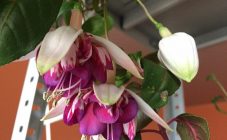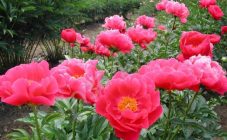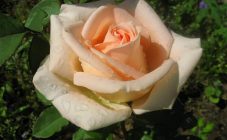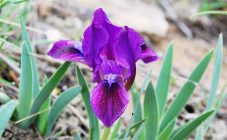Content:
Dahlias are among the long-flowering perennials. The beauty of these flowers hardly leaves anyone indifferent. Currently, there are more than 15 thousand varieties of dahlias, and their number is constantly increasing, so all their names are difficult to remember.
general description
Bright and colorful dahlias are a decoration for any garden or flower garden. They can be both tall and petite. In natural conditions, flowers can be found on the territory of the American continent, as well as in Peru and Mexico. In such conditions, plants grow to a height of about 2.5 meters. But there is an exception - the Dahlia imperialis variety can reach a height of about 6 meters. On the territory of Russia, dahlias, depending on the variety, grow on average from 30 cm to 1.5 m. The flowers of dahlias are distinguished by a complex structure.
In ancient times, among some peoples, such as the Aztecs, these flowers were considered sacred plants. Then these flowers were called akotli, they were often used to decorate majestic temples, as well as to prepare medicinal potions.
The color scheme is very diverse. Depending on the variety, the shade can differ significantly, just like the shape of the plants, which can be both small and huge. Often the center of attention is dahlias undersized or curb, which can decorate any flower garden. Moreover, the care and planting of curb dahlias is no different from other varieties.
Dahlias of the variety belong to thermophilic plants, therefore, in the conditions of the Russian climate, they do not hibernate in the open ground, but must be transferred to storage indoors.
Feature and Description
All varieties of dahlias are classified according to specific criteria. The main criterion is the distribution of inflorescence types. It is quite problematic to single out any species of this plant, since each variety has its own admirers. Someone prefers tall plants, others, on the contrary, love dwarf flowers.
The most common and popular varieties include:
- Franz Kafka - belongs to the pompom group and differs from the rest with its bright purple hue, lush and abundant flowering. The plants of this variety grow up to 80 cm in height, and the diameter of the flowers is about 8 cm. Due to the rather high growth, the flowers need to be supported. This variety blooms until late autumn.
- Dipest Yellow - belongs to the pompom group. This flower grows up to 110 cm, the flower grows up to 5 cm in diameter. Despite the fact that the bush of this variety is relatively tall, it looks rather compact.
- Sylvia - flowers grow up to one meter in height and are distinguished by abundant flowering and splendor. Inflorescences in plants look like round balls and stand out in the garden with their bright salmon shade.
- Manhattan is a new Dutch variety that reaches a height of about 90 cm. The petals are pointed, bright red with yellow tips.
- Exotic - refers to tall, needle-like dahlias, which have an unusual shape of petals. They are elongated, narrow and sharp. The flowers of this variety are very beautiful, white with crimson tips.
- Snow-covered Russia is a cactus-like variety with elegant snow-white inflorescences.
- Spartacus - differs in the original spherical shape and rather large inflorescences.
- Lady Darlene is a tall variety that strikes with a bright yellow-raspberry color.
- Pagoda is a powerful tall variety with large white inflorescences.
- Kids Climax are yellow-lilac flowers with fairly large inflorescences.
Every year, all new varieties go on sale, which amaze with their appearance. You can get acquainted with their characteristics in special catalogs. Each of the varieties is rightfully worthy of attention and will be able to decorate the garden, giving it uniqueness and originality, especially when mini dahlias grow in flower beds, with which gardeners often decorate the border.
Recently, the following are in great demand:
- Dahlias Gallery Mix and Gallery Bellini.
- Dahlias Evelyn and Tartan.
- Dahlias Akita and Wizard.
- Dahlias Figaro and Mignon.
- Dahlias Sakura Fubuki.
- Dahlias Black Fox,
- Santa Claus, Vuurvogel.
- Decorative dahlias Calvin Floodlight.
Features of growing and care
Growing both perennial and annual dahlias is not considered a laborious process. These plants do not require special care, therefore they are preferred by both experienced gardeners and beginners. The most important thing is to plant and dig up plants on time. The propagation of these flowers comes from seeds, cuttings and separated tubers.
Since these flowers are thermophilic and light-loving plants, they should be planted in sunny and protected from strong winds. You can grow plants on any soil, but still the best option is humus-rich garden loam or loose sandy soil.
Preparation of the site for planting flowers should begin in the fall. To do this, you need to dig up the soil well before winter, and in the spring just loosen it. It is recommended to plant dahlias as soon as the threat of even minor frosts has passed.
For planting, you need to dig a hole, fertilize it, and provide supports for mating growing plants. After planting, it is imperative to water the plant and mulch with chopped tree bark.
After planting, it is easy to care for varietal dahlias. To form a beautiful and lush bush, regular cutting of stepchildren is required, which grow in the leaf axils. It is also necessary to periodically remove the buds on the side shoots, and it is also necessary to remove wilted inflorescences.
In hot weather, you need to provide the flowers with abundant watering and mulch the soil to retain moisture. During the period of plant growth, they need to be fertilized with complex organic or mineral fertilizers. Top dressing is carried out once every 10 days.
Varieties of diseases and pests
Dahlias can develop various diseases, but most often the flowers are susceptible to fungal diseases, which are caused by excessive moisture or the density of their planting.
The most common ailments that these flowers suffer from are:
- Leaf spot - a sign of ailment is the appearance of a yellow-green tint on the leaves.
- Gray rot - characterized by the appearance of brown spots on the leaves.
- Fusarium wilting - the signs of this disease are the same for all varieties. First of all, the roots and tubers are damaged, which completely rot, after which the leaves begin to wilt rapidly and the flower is covered with pink or brown bloom.
- Brown rot - young shoots are affected by brown rot.
All of the above diseases in flowers are treatable. There are also ailments such as mycosis, fusarium, and the mosaic virus that cannot be treated.
Dahlias can also be affected by numerous pests, such as strawberry nematodes, plant bugs, gamma scoops and slugs.
During the cultivation of dahlias, each gardener will have to face certain problems and nuances, but in reality, not everything is so scary. The plant is not capricious and does not require constant attention. In gratitude for the minimum time given, the flower will throw out all new buds and delight the owners with the duration and riot of flowering.















